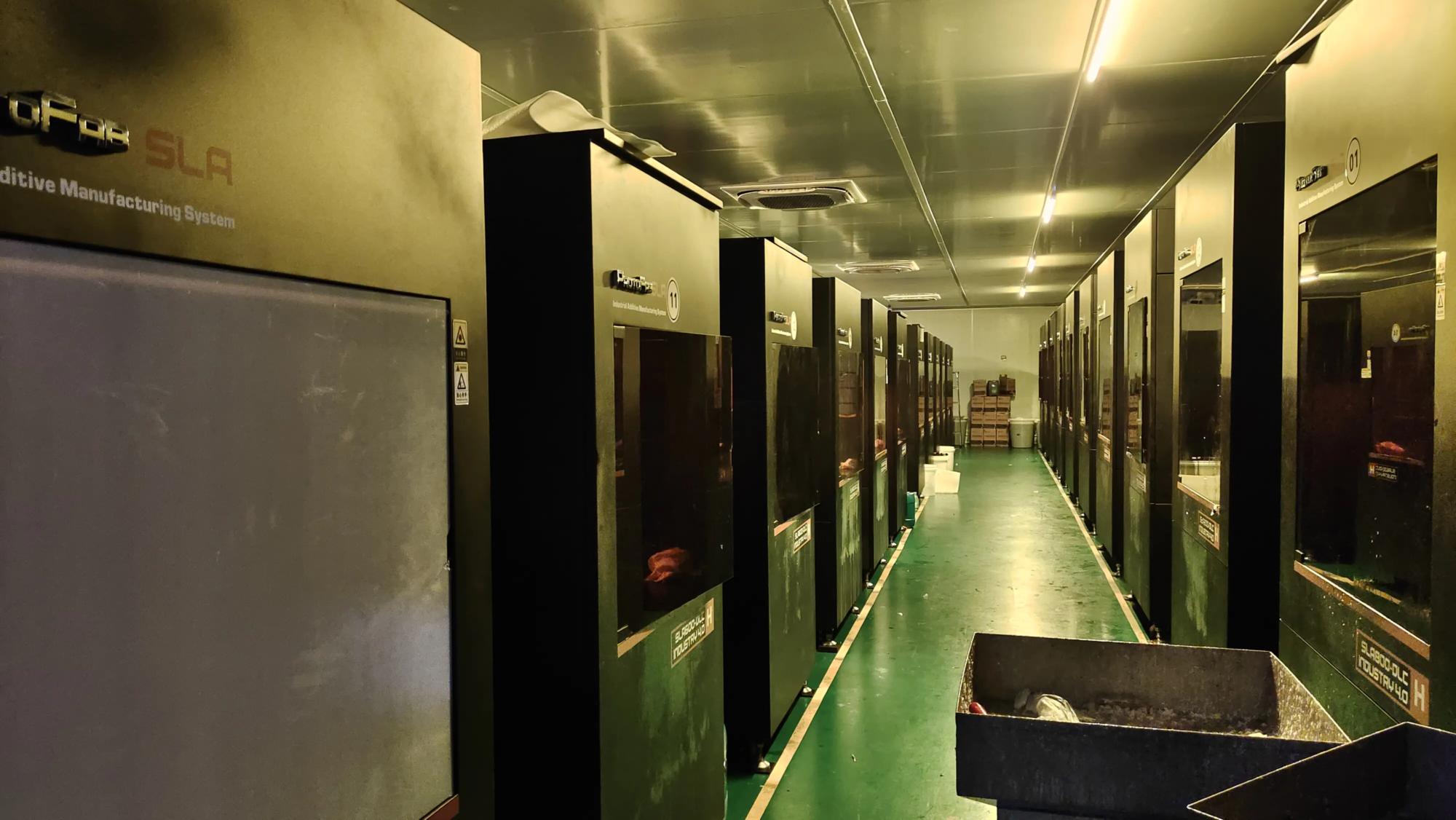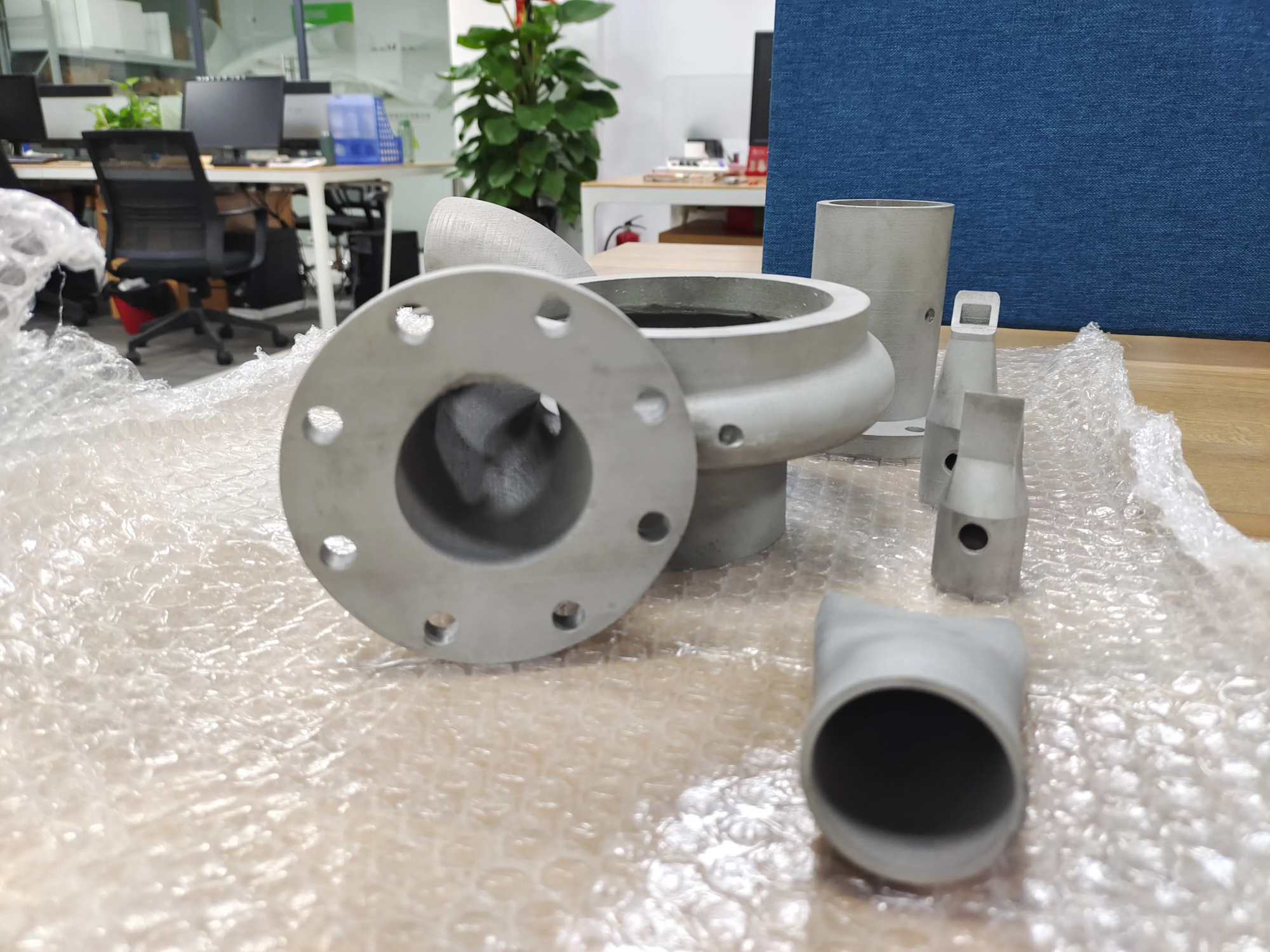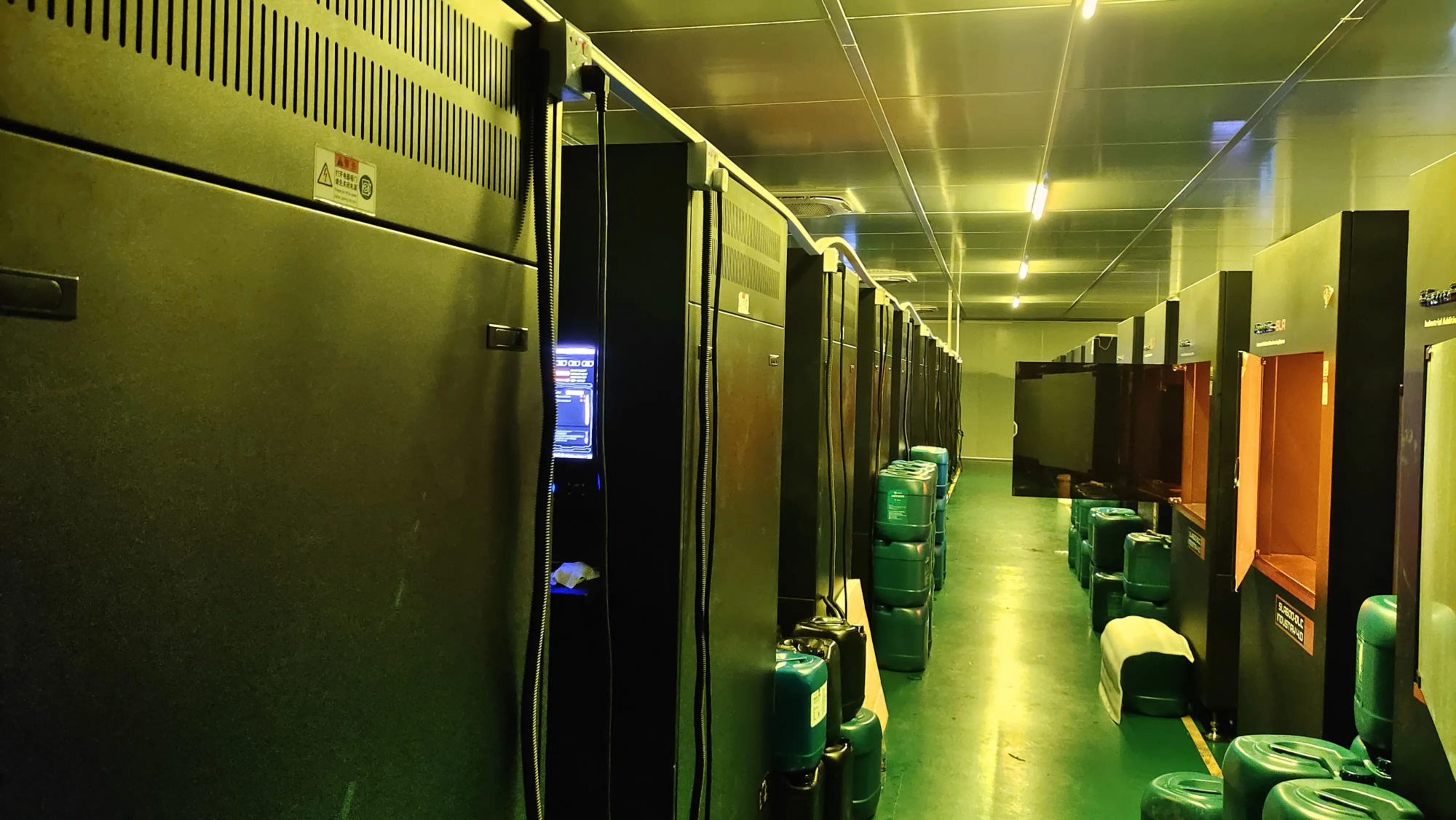Navigation of 3D Printing Pricing: Insights from Industry Guides and Why Expertise Is Important
The emergence of 3D printing (additive manufacturing or AM) has revolutionized prototyping and low-volume production. However, a problem is always imminent, for engineers, designers and businesses: "how much does it cost?" While global transport giants like UPS have ventured into the 3D printing service space, it offers accessible pricing guides that truly understand cost dynamics and ensure Best Value Quotes that are often required beyond the surface level, especially for complex metal parts. This is where expertise and advanced features are, e.g. Rapid prototypingbecomes critical.
Decoding UPS 3D Printing Pricing Guide: Starting Point
UP enters on-demand manufacturing to provide valuable "Entry level" Benchmark. Their online platform and pricing guides are designed to simplify the process. Generally, UPS pricing can usually be achieved through:
- Upload your model: Customers submit digital files (e.g., .stl, .obj) through the UPS online portal.
- Instant reference algorithm: Their system modeled based on volume calculations and material density analysis.
- Material selection: Listing of basic thermoplastics such as PLA, ABS, nylon, sometimes resin or metal (usually advanced), has associated costs per cubic unit.
- Results Quote: A basic price is provided, usually reflecting:
- Material quantity/weight: The main cost driver.
- Material Type: Standard plastics are cheaper, and metals and professional materials are much more expensive.
- Basic build time estimate: Platform time will affect costs.
- Optional finish: Simple options can be offered at an additional cost, such as basic polishing or painting.
This model provides Accessibility and speed. It is ideal for simple, non-critical prototypes or visual models in common plastics where dimensional tolerances and advanced mechanical properties are not the most important. It requires fast, low-risk parts.
Beyond the basics: The actual cost driving force of professional-grade metal 3D printing
However, for functional prototypes, end-use metal parts require high strength, complex geometry or tight tolerances, and UPS pricing structures are often reduced. They are unable to solve complex technical expertise and processes that are critical to quality and reliability. Selective laser melting (SLM) For metal. Real cost and value more:
- Technology and Machinery Investment: Compared to simple FDM printers that are often used for basic-level services, efficient SLM printers with advanced laser systems (like Greatlight) with controlled atmospheres represent a significant investment. This affects depreciation costs and operational overhead.
- Materials Science Expertise: The cost difference between basic plastics and high performance metals (stainless steel, titanium, aluminum alloy, inconel, etc.) is huge. In addition, truly cost-effective treatment requires in-depth understanding of the material properties, powder handling, recycling and optimal printing parameters of each specific alloy – the expertise of professional manufacturers to gate preservation.
- Complex post-processing: Fresh metal parts from the printer are almost always just "blank." They require extensive, often complex post-processing to meet functional requirements. This can include:
- Support removal: Carefully remove the complex support structure without damaging the parts.
- Relieve pressure/heat treatment: Improving material properties and dimensional stability is crucial.
- Surface finish: From media blasting and grinding for basic smoothness to CNC machining for critical interfaces, polishing, tumbling or specialized coatings (anodized and plating).
- Precision machining: Final tolerances are achieved on key features through CNC machining. It’s a great service and it’s part of it "One-stop" Solution.
- Quality Control: Dimensional inspection (CMM), non-destructive testing (NDT) and material certification add to the cost but is not transferable for functional parts.
- Design optimization and engineering support: Design for AM (DFAM) minimizes material usage, reduces print failures and optimizes post-processing. During the citation phase, visits with expert engineers significantly affect project success and Comprehensive Cost-effective. Off-the-shelf platforms rarely provide such depth of consultation.
- Volume and Complexity: Although pricing per cubic foot/g is common, complex geometry (thin walls, internal channels, complex support) increases printing time, difficulty and post-processing requirements, directly affecting the price more than a simple volume calculator may capture.
- Delivery time and urgency: real "Rapidly" Prototyping is usually of high quality with expedited turnover.
Why Greatlight goes up: Your professional partner in precision metal prototyping
Understanding these deeper complexities emphasizes why working with professional experts like this Rapid prototyping Provide outstanding results, usually in intense competition Total cost When mass and speed are taken into account. Here is how Greatlight solves the limitations of a generalized pricing model:
- Advanced SLM technical expertise: We invest in cutting-edge metal 3D printers leverage SLM technology to produce high-density, mechanically powerful components for demanding aerospace, medical equipment and industrial applications.
- Unparalleled Material Mastery: In addition to offering a wide range of metal alloys, including customization options, we also have a deep understanding of the best printing parameters, powder properties and material behavior for each specific application, ensuring partial performance and minimizing waste/failure.
- Comprehensive "One-stop" Post-processing: Greglime not only needs to print; we’re done. Our integrated services cover every stage: expert support for removal, precise CNC machining interface machining, advanced heat treatment, a wide range of finish options (from satin to mirror polish, bead blasting to dedicated coatings), and strict quality control – eliminating the hassle and cost-equivalent measurement.
- In-depth technical consultation: Our engineer job and You are from the DFAM stage. We optimize your role for your productivity, cost reduction and performance improvements – a consulting method that the platform lacks.
- Quick customization and true flexibility: Need a specific alloy, unusual finish, or tolerance to critical functions? Our specialization enables us to handle highly customized requests efficiently.
- Competitive Value Proposition: By optimizing the entire workflow under one roof and leveraging technical efficiency, Greatlight provides High precision, reliable metal prototypes and parts have good value. Transparency considerations for citations Complete rangeensure there is no basic post-processing fee.
Conclusion: Value beyond the cost of cubes
While UPS’s public pricing guide enables simple, non-functional parts by providing baseline transparency and accessibility, serious real cost and value equations Precision metal rapid prototyping More subtle.
Success depends on obtaining parts that meet technical specifications, strict quality standards and demanding timelines. Achieving this requires the use of advanced hardware (such as SLM), deep materials science, complex post-processing capabilities, and dedicated engineering support – factors that are often not reflected in basic volume calculations.
This is what professional manufacturers like Great Distinguish yourself. As a leading rapid prototyping manufacturer from China, we combine state-of-the-art SLM technology with comprehensive interior decoration and precise machining, and are fully supported by expert engineering guidance. We not only sell prints; we reliably provide quality solutions for end-use. initial "Cube cost" Just one piece; the real value lies in working with a team that can handle complexity and provide the parts that are truly executed. When it is crucial to require metal prototypes or small-volume production parts, choosing expertise (such as Greatlight) ensures performance, reliability and ultimately quality value.
FAQs (FAQs) – 3D Printing Pricing and Services
Q: Why is metal 3D printing more expensive than plastic?
- one: Metal powders are much more expensive than plastic silk/resin. SLM machines require complex laser systems, inert gas environments, and involve high energy consumption. Post-treatment of metal parts (support removal, heat treatment, machining, surface finish) is also more intensive and professional than most plastics.
Q: What factors affect the cost exceeding the size of the part?
- one: Key factors include: Material type and cost per kilogram,,,,, Printing technology (SLM and FDM and SLS), Part complexity/geometry (support, thin wall, overhanging time/cost), Required accuracy and tolerances,,,,, Surface finish specifications,,,,, Quantity/quantity sortand Delivery time/urgency.
Q: Can I get a simple price like UPS offers per cubic centimeter (CM³)?
- one: Although quantity is the main component, there are few professional manufacturers The only one For metals using CM³ due to other important cost drivers (complexity, post-processing). We provide quotes based on a comprehensive analysis of your CAD documents, specifications, materials and required finishes for accurate total costs.
Q: Why is post-processing crucial for metal 3D printed parts? How does it affect costs?
- one: The metal parts printed in the period usually have rough surfaces, attached support structures, and internal stresses and often require machining to achieve critical dimensions. Post-treatment (support removal, heat treatment, machining, grinding, polishing) is crucial to function, strength, appearance and achieve tolerances. This is a complex multi-step phase, usually accounting for 30-70% of the total cost, depending on the requirements, highlighting the value of Greatlight’s one-stop service.
Q: How to make my metal 3D printing project more cost-effective?
- one: Key strategies include: Optimize the geometry of AM (DFAM) Minimize support, materials and printing time; Choose the most cost-effective material; Designed for easier post-processing (e.g., accessible support points); A reasonable delivery time is allowed;and Use expert guidance (Like Greatlight’s engineers) Start with the design phase.
Q: Like Greatlight, what advantages does professional manufacturers offer in general printing services?
- one: We provide Depth rather than breadth: Advanced SLM expertise for complex metals, extensive material knowledge, high-quality post-processing under a roof (time and cost savings), engineering consulting for optimal design, dedicated quality control protocols, and greater custom flexibility and precise requirements. This translates into higher quality functional parts, reducing project risk and overall value of complex metal prototypes and parts is usually better.
- Q: Does Greatlight handle low-volume production or just prototypes?
- one: Absolutely. When we iteratively design on rapid prototyping, our capabilities seamlessly extend to small volume and medium production runs for metal components, leveraging the speed and geometric freedom advantages of SLM technology. Our one-stop post-processing ensures consistent production quality.
Ready to experience the difference between professional manufacturing expertise and SLM technology? Contact Greatlight now for detailed, no-obligation quotes and expert advice on optimizing your next high-precision metal project. Let us build the future layer by layer.





